If a flower had to be associated with Madrid, probably the collective imagination would put the spotlight on the Carnation. Some of you would not be misguided, because the carnation is the flower that chulapas wear in their handkerchiefs and chulapos in their buttonholes. A very traditional flower that has not stopped being seen these days during the celebration of San Isidro. But in Madrid there are many more flowers; some of them with a lot of history behind.
In the Sierra de Madrid grows a gigantic range of flowers, some of them native to the Community such as the geranium of El Paular, a very curious species of garish colors that is not so well known.
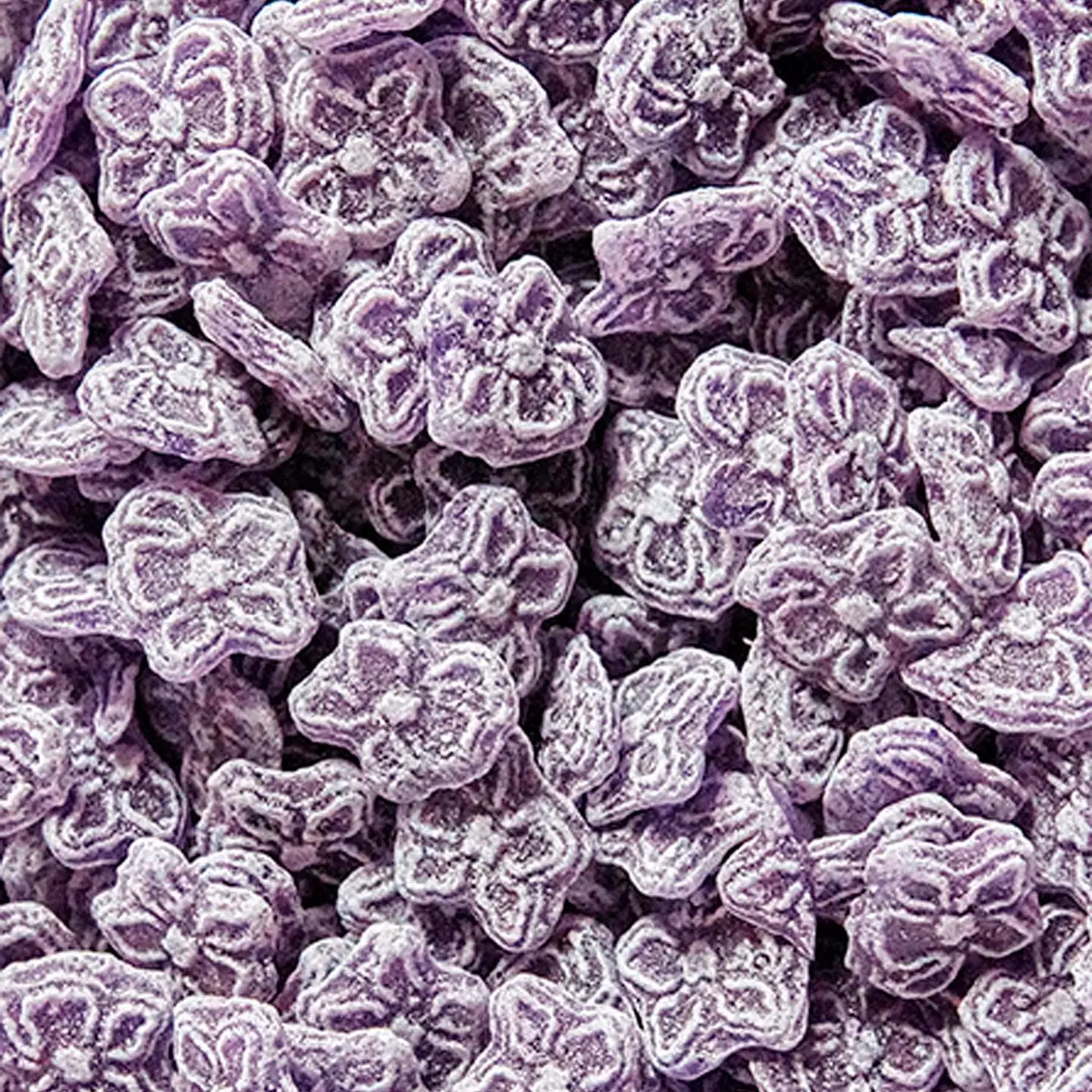
Violet candy from La Violeta.
The purple also grows in the Sierra de Madrid and is considered one of the official flowers of the capital of Spain. grows in height, near the places where the water flows and in great abundance, which allowed at a given moment that many families appreciate this gift of nature in order to survive. And so it was for almost a couple of centuries.
As we inaugurated the 20th century, the fragrance given off by the violet could not go unnoticed by artists, pastry chefs, writers and filmmakers. In his day he fed those who did not have, but who could earn a living selling them. Nowadays is one of the essences of Madrid, because Madrid does not know how to dance without its violet, a flower that became one of the most legendary candies in the capital, that served as an inspiration for writers and musicians and that is currently part of their backbone. Madrid owes part of its history to the violet, and it has made it known.
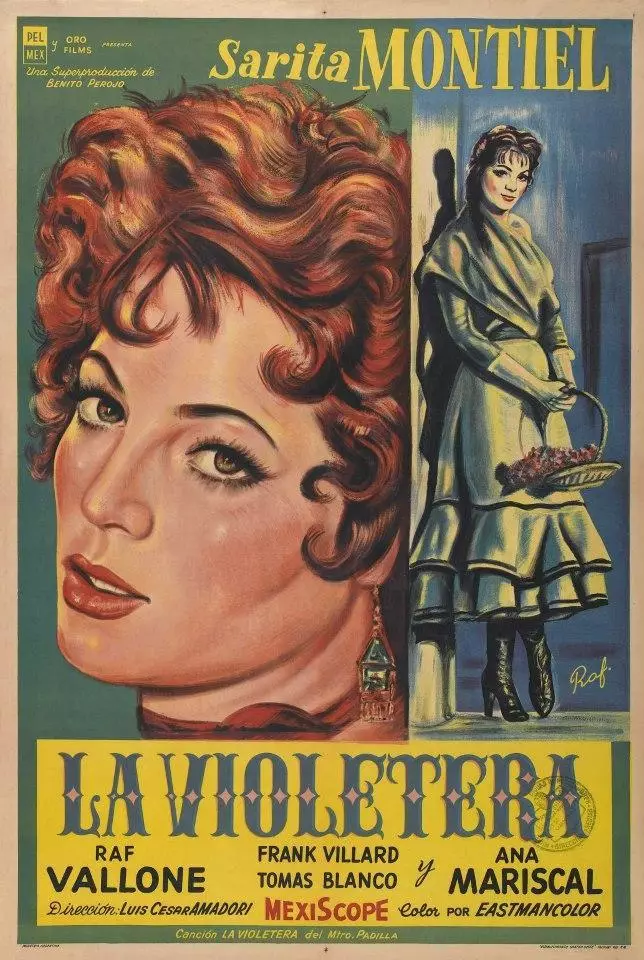
'La Violetera', directed by Luis César Amadori.
LA VIOLETERA, A VERY MADRIDIAN CHARACTER
The world of cinema and music have not gone unnoticed by the love story that maintains Madrid with the violet. Because a bunch of violets It didn't cost more than one real, or at least that's what the great Sarah Montiel in the film that she covered the cuplé by maestro José Padilla, The Violet. You have to go back to the year 1958, when Sara Montiel rubbed shoulders with the greats of Hollywood as a recognized star, she was already herself and her appearances in the media of the time were constant.
La violetera tells the story of a young woman who made a living in Madrid at the end of the 19th century by selling little bunches of violets. The young woman falls in love with a wealthy young man, an impossible love who finally ends up getting married in a marriage of convenience, leaving the violet girl desolate. A French tycoon discovers the violetera singing and takes her to Paris, where he makes her a song star, although she feels that she cannot live without Madrid. Widowed, sadness leaves the violetera without a voice, but fate wants her to she meets her first love again...
The history of the violetera from Madrid, although it is remembered in the cinema for the performance of Sara Montiel, was originally sung ad nauseam by Rachel Meller, of which there is evidence of the first recording of it in 1918. Of course, the film version was a real box office bomb in Madrid and remained on the bill for more than a year, even when the protagonist herself (Sara Montiel) did not attend the same premiere.
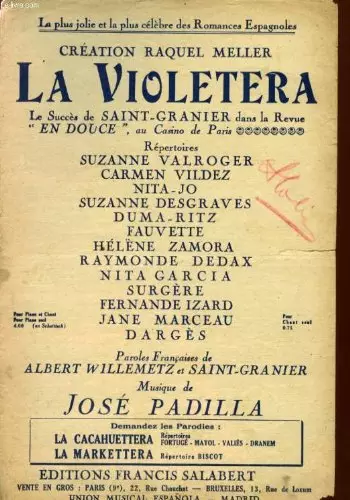
La Violetera, by José Padilla.
Thanks to this character, the world of violeteras was able to turn 180 degrees since at the end of the 19th century the reality of the violeteras was very different. It was said that the violeteras were women who dazzled men to leave them penniless. They were qualified as very low-class women, since his life was precarious and they used to be considered as criminals or thugs. It was even normal to believe that they practiced a covert prostitution at the door of theaters and casinos.
In fact in 1916 he even considered standardizing them, perhaps to prevent indecent acts from being committed at that time. Padilla's Violetera was already beginning to play in theaters and with Raquel Meller, the possible dark past of the violeteras disappeared.
Madrid has thanked and remembered Padilla's violetera with great affection. So much so that in 1991 a monument was erected to pay homage to this character from Madrid in the Parque de las Vistillas, work of the sculptor Santiago de Santiago.
Initially it was located at the intersection of Calle Alcalá and Gran Vía, but finally it was relocated in 2002 in the Parque de las Vistillas, being one of the most photographed images during the celebration of the Festivals of the Dove in August. And that did not sit well with the people of Madrid, since the violeteras of Madrid in the 19th century moved around the area where the monument was initially located. In the new location it seems that the tribute is diluted, but this seems to be more than overcome.
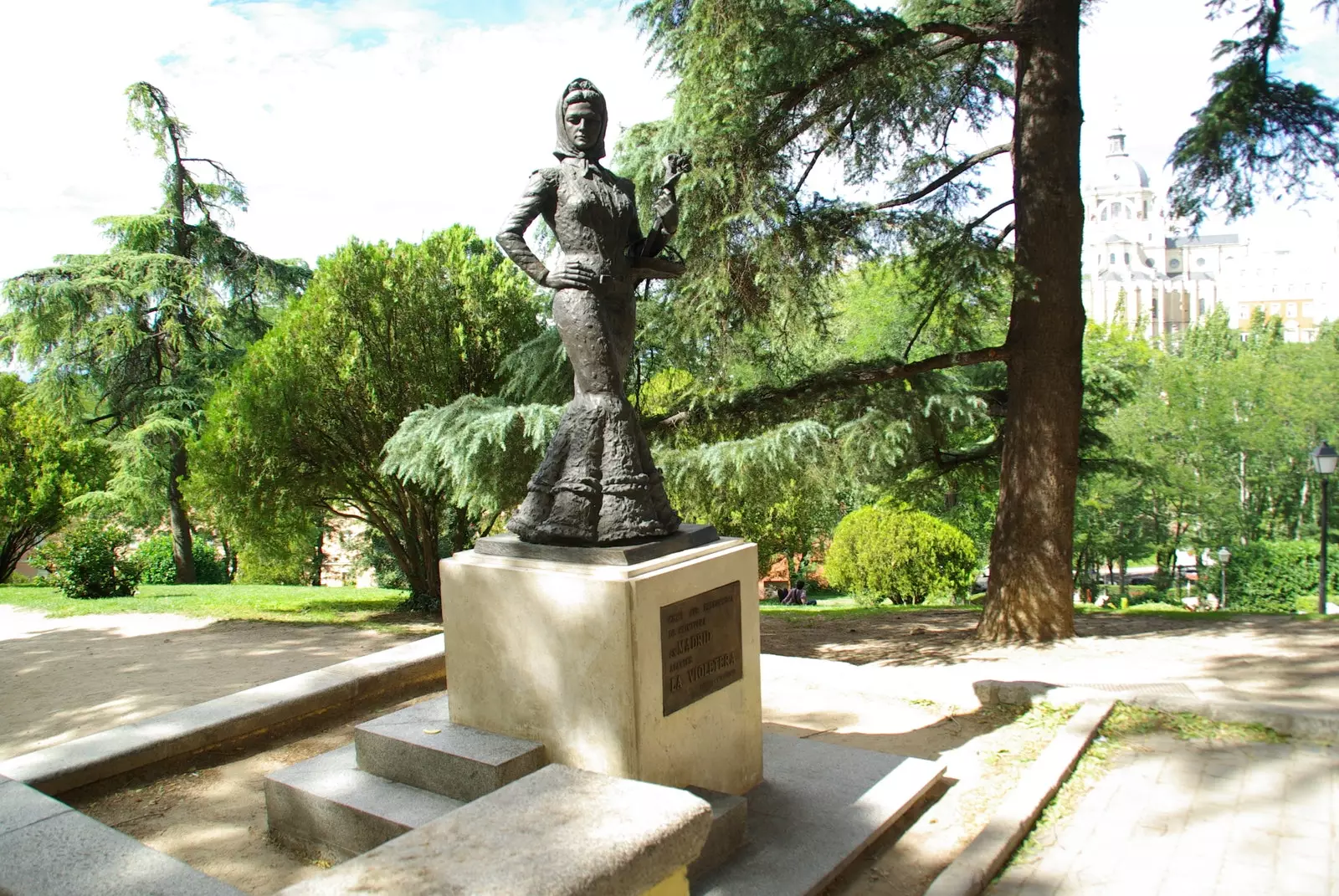
Monument to La Violetera.
THE STORY OF THE VIOLET IN A CANDY
the square of gutters Madrid is a very special corner of the capital that hides one of its century-old businesses, an icon that has been able to maintain itself over the years thanks to the violet. During the month of May it is essential to drop by number 6 to visit the violet, a sweet shop that has been making since 1915 the famous violet candies that define the city of Madrid so much.
It wasn't always a sweet shop. In fact Teresa and Pilar, the granddaughters of the founders, they have continued the business, working tirelessly in this small store that was once called “El Postre”. The candies are piled up in scrupulous order in old wooden cabinets, almost as if they were trophies or works of art, delicate and exquisite among purple bows.
“Many people come here out of curiosity, because they have never eaten them and have heard about them from their grandparents. Others are tourists, who are looking for a gift that is very much from the city and, what better than some violets?” they tell us funny.
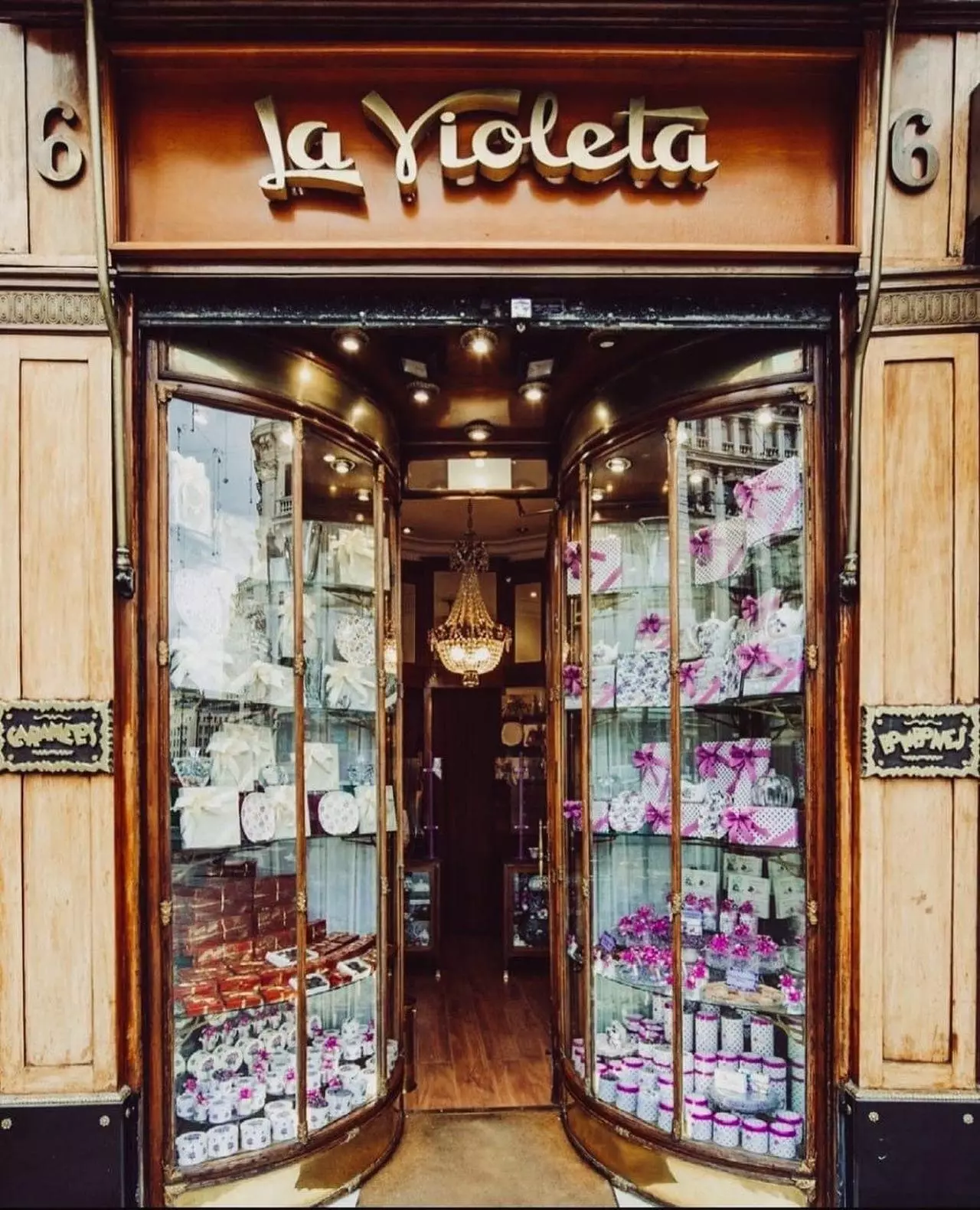
The Violet.
They also explain very curious things to us. The creation of this delicious candy came almost as a tribute to the violeteras who still sold bouquets of violets in the capital. The candy store in Plaza de Canalejas also became almost a cult site, since your shop window in shades of mauve, violet and purple It would draw a lot of attention from passers-by and foreigners of that time. Their candies are made with sugar glucose and essence of violet, a simple recipe but that they elaborate with mastery and that, with all certainty, can be denominated as the “essence of Madrid”.
His violets managed to dazzle the very Hyacinth Benavente, that he ended with a true addiction for these precious candies. Well, and at King Alfonso XIII, that we already told you in his day that he had a very sweet tooth and got fine piononos. He too fell under the spell of the violet candies and was a regular customer.
Nowadays we have been able to see the violet candies in the celebrations of San Isidro everywhere, even more so in the outskirts of the Sun Gate. But violets are one of the sweets from Madrid that, despite the regrets, they will never go out of style. Of course, there are many candies but like those of La Violeta de la Plaza Canalejas, none.
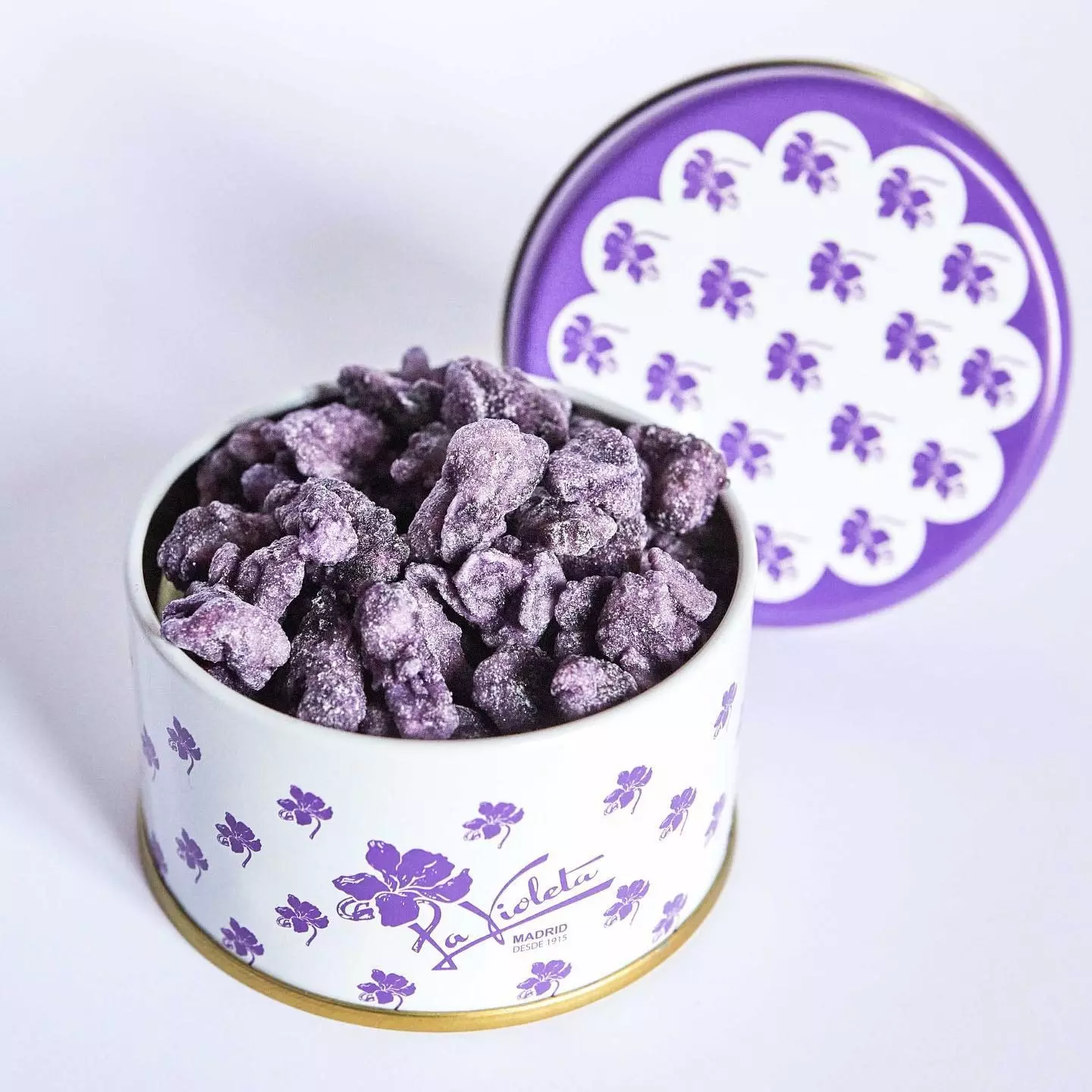
Sweet temptation!
